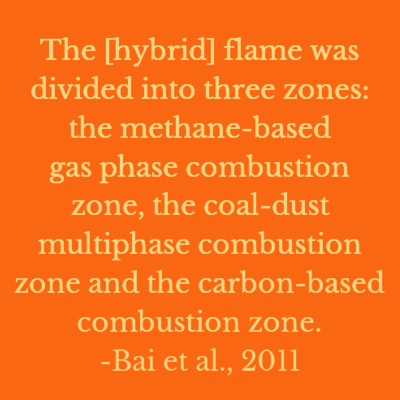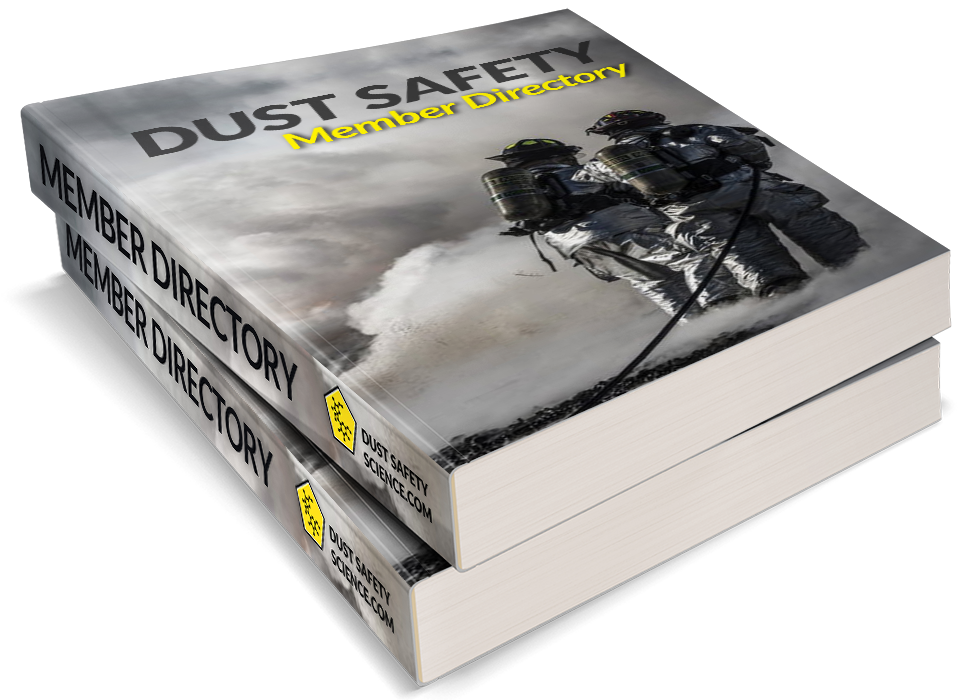1-Sentence-Summary: A simple mathematical model is developed for explosion propagation which illustrates differences in time scaling and flame area between spherical and cylindrical vessels.
Authors: J. Singh
Read in: Three Minutes
Favorite quote from the paper:

The current authors develop a simple mathematical model for gas explosion propagation in spherical and non-spherical vessels. The model requires simple input including the final explosion pressure and fundamental burning velocity of the fuel. The model also highlights the physical differences in flame propagation in different vessel geometries and is able to reproduce the classical equations or cubic-relatonship used for spherical vessels (e.g., see Combustion, Flames, and Explosion of Gasses).
The authors give a very good description of the equation development and end up with a relationship between pressure and time that is independent of vessel geometry except for definition of the flame area. The use of the equations is then to break the flame propagation into multiple parts. The flame area is predicted based on spherical propagation before the flame hits any walls. After the flame hits the radial walls of a cylindrical vessel, hemispherical propagation down the length of the chamber is assumed. The effect of different ignition locations can be taken into account by modeling spherical propagation, followed by two hemispherical flames in each direction, followed by a single hemispherical flame in one direction.
The biggest assumption in the model is that the transition period between spherical propagation in all directions and hemispherical propagation in specific directions is infinitely fast. From comparison to experimental data, the model performs well for both cylindrical vessels if the length-to-diameter ratio is 2 or larger.
Three of the main findings from analysis of the mathematical model are:
- Temporal scaling in non-spherical chambers can be determined by using alternative characteristic lengths for different parts of the explosion.
- Explosion vent sizing can be adjusted based on the flame area resulting from the vessel geometry and ignition location.
- Acceptable explosion suppression times can be estimated using the simplified mathematical model.
The following sections outline the main findings in more detail. The interested reader is encouraged to view the complete article at the link provided below.
Finding #1: Alternative characteristic lengths can be used for time-based scaling in non-spherical vessels
In order for experimental data from laboratory chambers to be used for full-size industrial vessels, the explosion parameters must be scaled. Furthermore, ignition location inside the chamber will also change the times required to reach maximum pressure.
The model shows that the time to reach maximum pressure scales with the vessel radius divided by the flame propagation velocity for spherical chambers (\(r_{s}/S_{f}\)). For cylindrical chambers before the flame reaches the wall, the vessel radius can be replaced by the cubed root of the cylindrical vessel volume (\([r_{c}^{2}*L]^{1/3}\)). The second part of the flame propagation scales according to \(L/S_{f}\) for long cylindrical chambers.
Finding #2: The flame area can be used to scale explosion vent sizing
The author states that sizing of relief vents for explosion protection is primarily determined based on the rate of flame propagation. Since the current model showed that the only effect on flame propagation rate for different size vessels was the flame area, it is proposed that this can be used to scale the venting requirements between vessels.
For spherical vessels the area of the flame is assumed to be the area of a spherical reaction shell determined as \(A_{f} = 4\pi x_{s}^{2}\). For long cylinders with central ignition the flame area is \(A_{f} = 4\pi x_{c}^{2} \approx 4 A_{x}\) where \(A_{x}\) is the cross-sectional area of the vessel. For long cylinders with end ignition the flame area is half that of the centrally ignited vessels, \(A_{f} = 2\pi x_{c}^{2} \approx 2 A_{x}\).
Finding #3: Time available for explosion suppression can be estimated with the current model
Automatic suppression systems work by detecting the explosion and releasing the suppression compound before destructive pressure are reached. The author states that systems using a set pressure activation point, can be analyzed using the existing model.
An example is given for a system that is triggered at 1.5 bar and is only allowed to reach 2.0 bar. For a spherical chamber under these conditions, the author demonstrates that the allowable time to activate the suppression system is \(\Delta t = 0.018(r_{s}/S_{f})\) ms. In alternative vessel geometries the characteristic lengths given above can be used to estimate the acceptable suppression release time of the device.
My Personal Take-Aways From
“Explosion Propagation in Non-Spherical Vessels; Simplified Equations and Applications”
This paper is an excellent introduction to some of the basic concepts for explosion venting, suppression, and scaling of propagation rates between vessels. It is recommended for anyone who is using vent sizing formulas as background knowledge on how they are derived. Furthermore, the limitations of the simplified formulas such as constant flame velocity and ignoring transition effects should be kept in mind by the explosion practitioner.
Several of these assumptions become less straight-forward when the reacting fuel is a combustible dust. Definition of a “fundamental” burning velocity for dusts has yet to be achieved, and heat losses and turbulence play an important role. It would be interesting to see how the findings of this work compare when dust flame propagation theories such as proposed in Eckhoff, 1990 and Fauske are considered. A particularly interesting feature would be including the thick flame models developed by Dahoe et al., 1996 into non-spherical and non-central ignition scenarios.
Full Citation: [bibtex file=references.bib key=Singh1987]
[otw_shortcode_button href=”http://www.sciencedirect.com/science/article/pii/095042308880007X” size=”medium” icon_position=”left” shape=”square”]> > Get The Article[/otw_shortcode_button]
